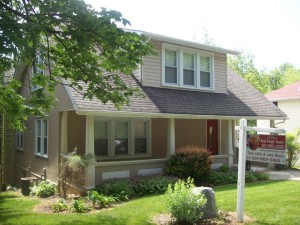Plan and Prepare to Sell Your House

Selling Your Home; Million of existing homes are sold each year, and while each transaction is different every owner wants the same thing — the best possible deal with the least amount of hassle and aggravation.
Unfortunately, home selling has become a more complex business than it used to be. New seller disclosure statements, longer and more mysterious form agreements, and a range of environmental concerns have all emerged in the past decade.
More importantly, the home-selling process has changed. Buyer brokerage — where REALTORS® represent homebuyers — is now common nationwide, and good buyer-brokers want the best for their clients.
The result is that while hundreds of thousands of existing homes may be sold each week, the process is not as easy for sellers as it was five or 10 years ago. Surviving in today’s real estate world requires experience and training in such fields as real estate marketing, financing, negotiation and closing — the very expertise available from local REALTORS®.
Are you ready?
The home-selling process typically starts several months before a property is made available for sale. It’s necessary to look at a home through the eyes of a prospective buyer and determine what needs to be cleaned, painted, repaired and tossed out.
The home-selling process typically starts several months before a property is made available for sale. It’s necessary to look at a home through the eyes of a prospective buyer and determine what needs to be cleaned, painted, repaired and tossed out.
Ask yourself: If you were buying this home what would you want to see? The goal is to show a home which looks good, maximizes space and attracts as many buyers — and as much demand — as possible.
While part of the “getting ready” phase relates to repairs, painting and other home improvements, this is also a good time to ask why you really want to sell.
Selling a home is an important matter and there should be a good reason to sell — perhaps a job change to a new community or the need for more space. Your reason for selling can impact the negotiating process so it’s important to discuss your needs andwants in private with the REALTOR® who lists your home.
When should you sell?
The marketplace tends to be more active in the summer because parents want to enroll children in classes at the beginning of the school year (usually August). The summer is also typically when most homes are likely to be available.
The marketplace tends to be more active in the summer because parents want to enroll children in classes at the beginning of the school year (usually August). The summer is also typically when most homes are likely to be available.
Generally speaking, markets tend to have some balance between buyers and sellers year-round. In a given community, for example, there may be fewer buyers in late December, but there are also likely to be fewer homes available for purchase. So, home prices tend to rise or fall because of general demand patterns rather than the time of the year.
Owners are encouraged to sell when the property is ready for sale, there is a need or desire to sell, and the services of a local REALTOR® have been retained.
How do you improve your home’s value?
The general rule in real estate is that buyers seek the least expensive home in the best neighborhood they can afford. In terms of improvements, this means you want a home that fits in the neighborhood but is not over-improved. For example, if most homes in your neighborhood have three bedrooms, two baths and 2,500 sq. ft. of finished space, a property with five bedrooms, more baths and far more space would likely be priced much higher and likely be more difficult to sell.
The general rule in real estate is that buyers seek the least expensive home in the best neighborhood they can afford. In terms of improvements, this means you want a home that fits in the neighborhood but is not over-improved. For example, if most homes in your neighborhood have three bedrooms, two baths and 2,500 sq. ft. of finished space, a property with five bedrooms, more baths and far more space would likely be priced much higher and likely be more difficult to sell.
Improvements should be made so that the property shows well, is consistent with the neighborhood and does not involve capital investments, the cost of which cannot be recovered from the sale. Furthermore, improvements should reflect community preferences.
Cosmetic improvements – paint, wallpaper and landscaping – help a home “show” better and often are good investments. Mechanical repairs – to ensure that all systems and appliances are in good working condition – are required to get a top price.
Ideally, you want to be sure that your property is competitive with other homes available in the community. REALTORS®, who see numerous homes, can provide suggestions that are consistent with your marketplace.


